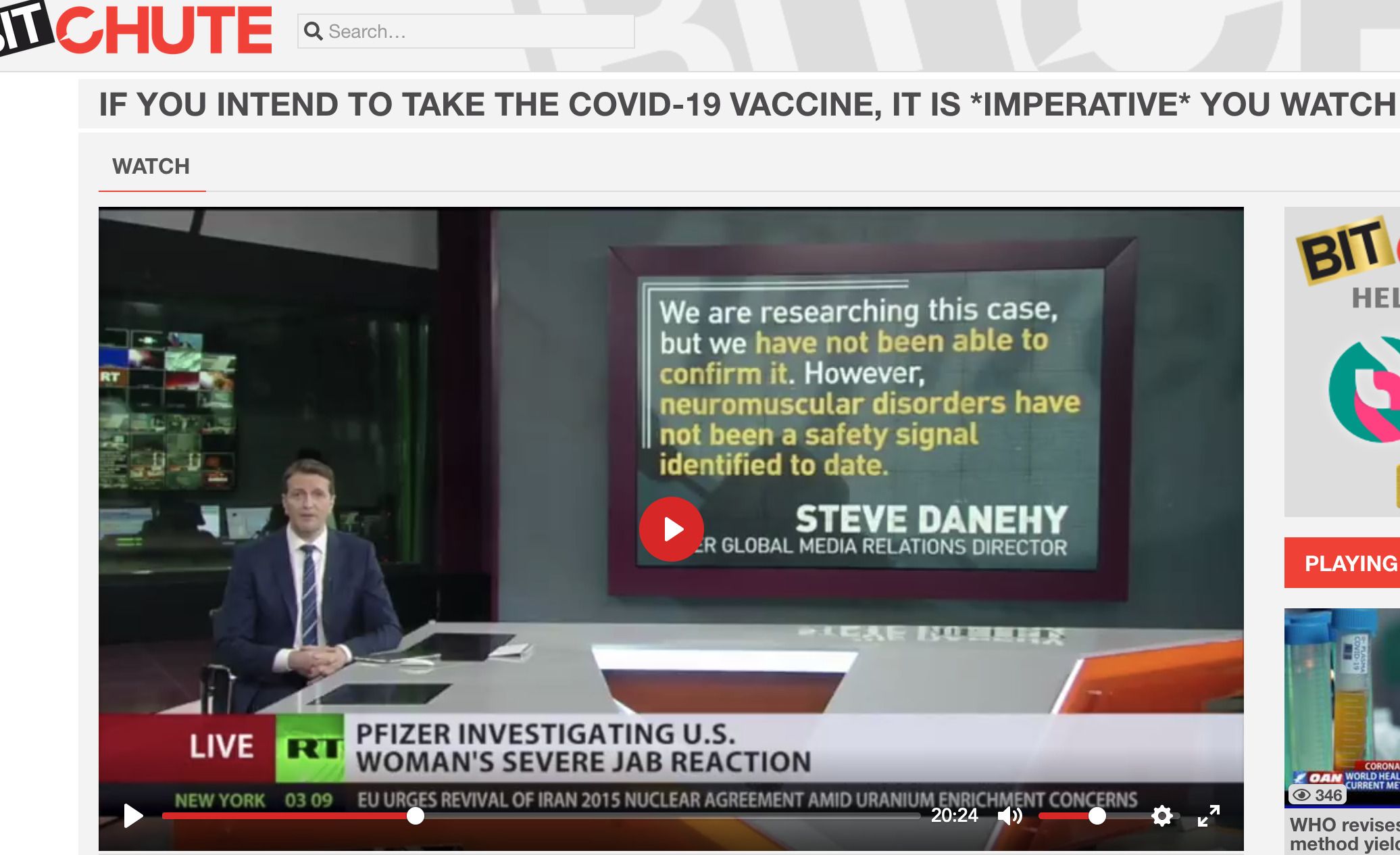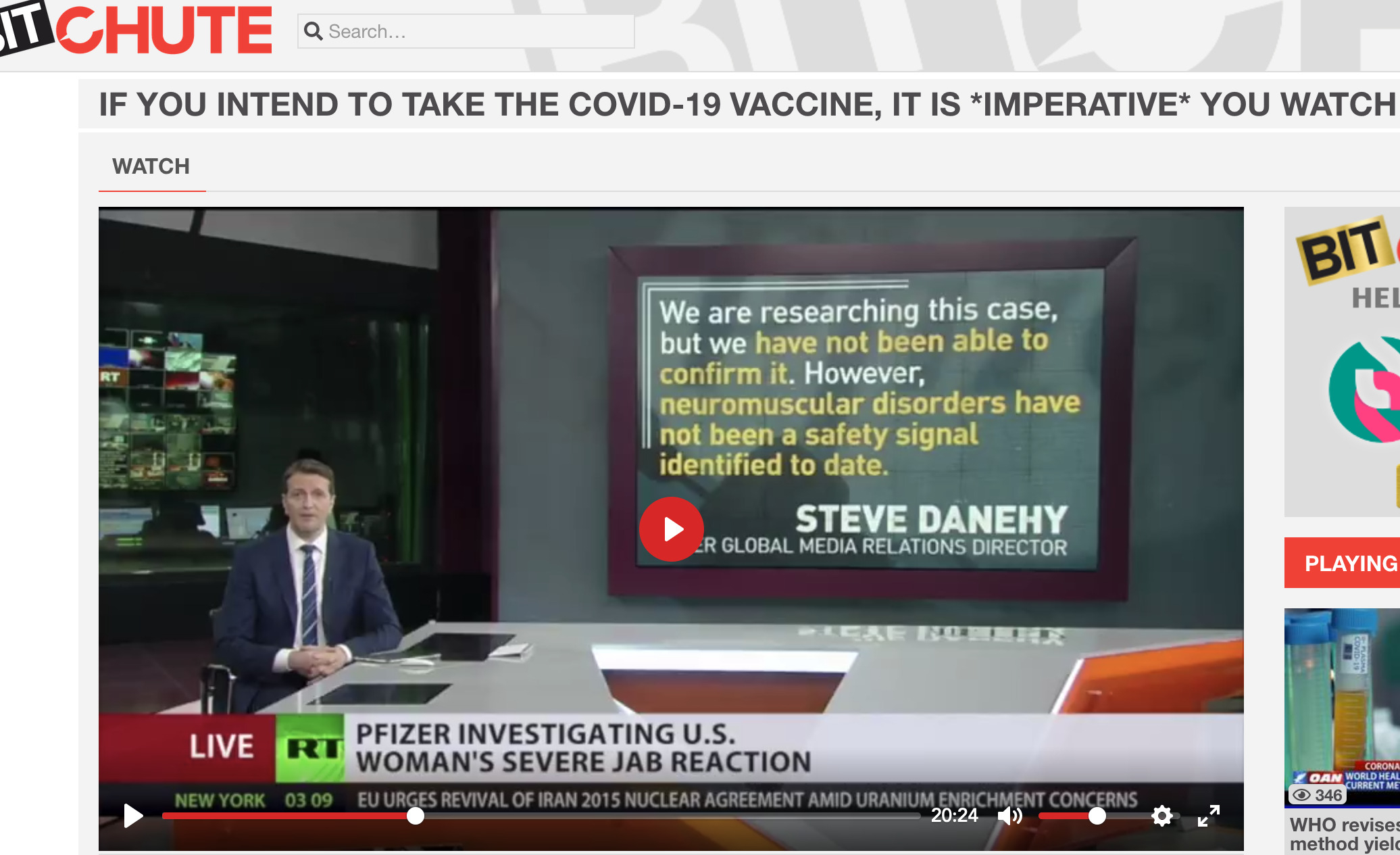As digital media continues to reshape global communication, platforms outside the mainstream ecosystem—such as BitChute—have gained remarkable influen
As digital media continues to reshape global communication, platforms outside the mainstream ecosystem—such as BitChute—have gained remarkable influence. Built as an alternative to YouTube, BitChute promotes itself as a space for unrestricted expression, minimal moderation, and user-driven content. This open-door policy has attracted diverse creators; however, it has also made BitChute a hotspot for controversial subjects, especially around vaccines.
The term “BitChute vaccine” has emerged online to refer not to a literal vaccine, but to the vast amount of vaccine-related content circulating on BitChute—much of which contains speculation, conspiracy theories, or misinformation. Understanding how BitChute hosts and amplifies such narratives is crucial for public awareness, media literacy, and global health communication.
This article explores BitChute’s structure, why it became a hub for anti-vaccine messaging, the effects of misleading medical videos, and how viewers can critically evaluate content on alternative platforms.
What Is BitChute?
BitChute launched in 2017 as a peer-to-peer video-sharing platform designed to circumvent the strict moderation and algorithmic censorship associated with mainstream sites like YouTube. Built using WebTorrent technology, BitChute reduces infrastructure needs by distributing content among users instead of centralizing storage.
Key Features That Define BitChute
-
Minimal Content Moderation:
Unlike YouTube, BitChute has far fewer automated systems for removing content flagged as harmful or misleading. -
Focus on “Free Speech”:
The platform appeals to creators banned or restricted on larger platforms. -
Community-Driven Discovery:
Algorithms are simpler, often pushing trending or controversial videos into users’ feeds. -
Political and Social Commentary:
A large portion of BitChute’s library is fueled by political opinions, social debates, and alternative viewpoints.
Because of these features, BitChute became a fertile ground for vaccine-related narratives during global health events such as the COVID-19 pandemic.
Why Vaccine Content Flourished on BitChute
The rise of vaccine-related videos on BitChute is not accidental. It is the result of a combination of platform philosophy, user motivations, and shifting content migrations from other sites.
1. Creators Banned Elsewhere Moved to BitChute
As YouTube and Facebook tightened health-related moderation, especially during COVID-19, many creators who shared unverified or harmful medical claims faced:
-
channel strikes
-
content removals
-
demonetization
-
full bans
BitChute became the refuge for this displaced community. The lack of strict medical misinformation rules allowed such creators to upload freely.
2. Algorithmic Amplification of Polarizing Content
Controversial videos tend to generate discussion, shares, and reactions. Even without an aggressive algorithm, simple popularity metrics on BitChute push highly emotional or conspiratorial vaccine videos into trending sections.
Content that appears suppressed on mainstream platforms often gains more popularity on BitChute due to the “forbidden” or “hidden truth” appeal.
3. Demand for Alternative Narratives
A significant audience actively seeks non-mainstream explanations for scientific or political issues. This includes:
-
distrust in pharmaceutical companies
-
suspicion toward government authorities
-
fear of rapid vaccine development
-
desire for “insider” or “independent” commentary
BitChute positioned itself as the place where such perspectives could flourish unchecked.
Types of Vaccine Content Commonly Found on BitChute
While BitChute hosts a wide variety of topics, vaccine-related content often falls into recurring categories. Understanding these helps viewers identify patterns and evaluate reliability.
1. Conspiracy Theories
Conspiracy theories on BitChute often claim:
-
vaccines are tools of population control
-
microchips or tracking devices are implanted via vaccines
-
shadow governments coordinate vaccine campaigns
-
global elites engineered pandemics for profit
These claims lack scientific evidence but spread rapidly due to sensationalism.
2. “Whistleblower” Videos
Creators sometimes present interviews with alleged insiders:
-
nurses
-
doctors
-
laboratory employees
-
former pharmaceutical workers
Some of these individuals may be real medical professionals, while others lack verifiable credentials. Videos often rely on anecdotal or unverified claims presented as secret knowledge.
3. Misinterpreted Scientific Data
Many videos pull scientific or medical studies out of context, such as:
-
misrepresenting vaccine ingredients
-
misquoting clinical trial results
-
misunderstanding adverse event reports
-
incorrectly interpreting spike protein research
These videos may sound scientific but often misunderstand foundational biology or methodology.
4. Clips from Longer Debunked Documentaries
BitChute frequently hosts segments from banned or delisted documentaries, including:
-
anti-vaccine films
-
pseudo-scientific exposés
-
edited interviews
These videos tend to resurface repeatedly under different titles.
5. Personal Testimonies
Some videos share personal stories claiming vaccine harm. While individual experiences are important, they rarely include medical evaluation or evidence confirming vaccines as the cause.
How Vaccine Misinformation Spreads on BitChute
Understanding the mechanisms of misinformation spread helps in addressing and preventing it.
1. Emotional Hooking
Videos often use attention-grabbing titles such as:
-
“They Lied to You About Vaccines”
-
“The Truth They Don’t Want You to Know”
-
“Doctors Warn You: Avoid This Shot”
These emotionally charged headlines create curiosity and fear.
2. Community Reinforcement
Comments sections frequently include:
-
supportive messages
-
anecdotal “proof”
-
calls for distrust in authorities
-
links to more conspiratorial content
This creates echo chambers where misinformation thrives.
3. Lack of Fact-Checking
BitChute does not have:
-
medical advisory boards
-
verified health channels
-
misinformation warning labels
-
professional reviewers
Viewers often assume the content is credible simply because it is available.
4. Viral Sharing Outside the Platform
Misleading videos are often exported to:
-
Telegram
-
X (Twitter)
-
WhatsApp
-
Facebook groups
-
Reddit clones
This multiplies their reach far beyond BitChute.
The Real-World Impact of Vaccine Misinformation
The consequences of widespread misleading vaccine content are serious, affecting individuals, communities, and even national public health systems.
1. Increased Vaccine Hesitancy
Fear-based narratives reduce trust in scientifically proven vaccines, leading to lower vaccination rates and higher infection risks.
2. Spread of Preventable Diseases
Outbreaks of measles, polio, and other controlled diseases have returned in some regions due to declining immunization rates.
3. Distrust in Healthcare Professionals
When alternative platforms portray doctors as conspirators, nurse administrators as liars, or global health bodies as corrupt, the public becomes skeptical of legitimate medical guidance.
4. Polarization and Social Division
Vaccine debates intensify political and cultural divisions, as people cluster around ideologically aligned platforms.
5. Public Health Policy Challenges
Governments and health organizations struggle to communicate accurate information when misinformation spreads faster and proves more appealing.

Why People Believe Vaccine Videos on BitChute
Understanding user psychology is essential:
1. Lack of Scientific Literacy
People may struggle to interpret data, making them vulnerable to misleading claims.
2. Confirmation Bias
Viewers seek information that validates their existing fears or beliefs.
3. Distrust in Traditional Media
When mainstream outlets censor harmful misinformation, some viewers interpret it as proof of truth being suppressed.
4. Social Belonging
Communities around anti-vaccine narratives offer emotional connection, identity, and shared purpose.
5. Trauma and Fear
In times of illness outbreaks, fear makes people receptive to simple explanations and scapegoats.
How to Critically Evaluate Vaccine Content on BitChute
Rather than dismiss all alternative views, it’s essential to approach information with critical thinking.
1. Check the Source’s Credentials
Is the speaker a credentialed doctor, scientist, or epidemiologist? Can their identity be verified?
2. Look for Peer-Reviewed Evidence
Claims about health should be supported by multiple independent studies.
3. Beware of Sensational Language
If a title sounds shocking or fear-inducing, it may be designed to manipulate rather than inform.
4. Cross-Check with Reputable Medical Sources
Trusted sources include:
-
World Health Organization (WHO)
-
Centers for Disease Control and Prevention (CDC)
-
Peer-reviewed journals
-
Local health ministries
5. Avoid Overreliance on Personal Testimonials
Individual stories can be valid but do not replace scientific consensus.
6. Question Motives
Some creators profit from fear-based content through donations or merchandise.
BitChute’s Response to Vaccine Misinformation
BitChute has made limited efforts to label or restrict harmful medical misinformation, but enforcement remains inconsistent.
Platform Steps Taken
-
occasional disclaimers on certain videos
-
removal of the most extreme medical hoaxes
-
statements about respecting free speech while discouraging harmful content
Limitations
-
no comprehensive medical fact-checking
-
fewer content moderators
-
no partnerships with health organizations
-
creators can easily reupload removed videos
As a result, the platform remains heavily associated with unverified medical claims.
The Future of Vaccine Content on Alternative Platforms
As mainstream platforms strengthen their health policies, alternative platforms will continue hosting divergent views. The future will depend on:
1. Improved digital literacy among viewers
Education will help individuals distinguish fact from fiction.
2. Development of independent fact-checking tools
Browser extensions and AI tools may assist viewers in assessing credibility.
3. Transparent moderation policies
Alternative platforms may introduce clearer guidelines without compromising speech.
4. Health organizations improving communication
More engaging, accessible explanations from medical authorities can counter misinformation more effectively.
5. Creator accountability
As audiences become more informed, creators who spread false claims may lose credibility.
BitChute’s rise as a hub for vaccine-related content reflects broader tensions in the digital age: free speech vs. public safety, alternative viewpoints vs. scientific consensus, and personal belief vs. verified evidence. While the platform provides a space for uncensored discussion, it also carries a significant risk—especially when its videos influence perceptions on health, medicine, and global safety.
The term “BitChute vaccine” symbolizes the complex intersection of alternative media ecosystems and public health misinformation. Understanding how such content spreads, why people believe it, and how to critically analyze it empowers viewers to make informed choices.


COMMENTS